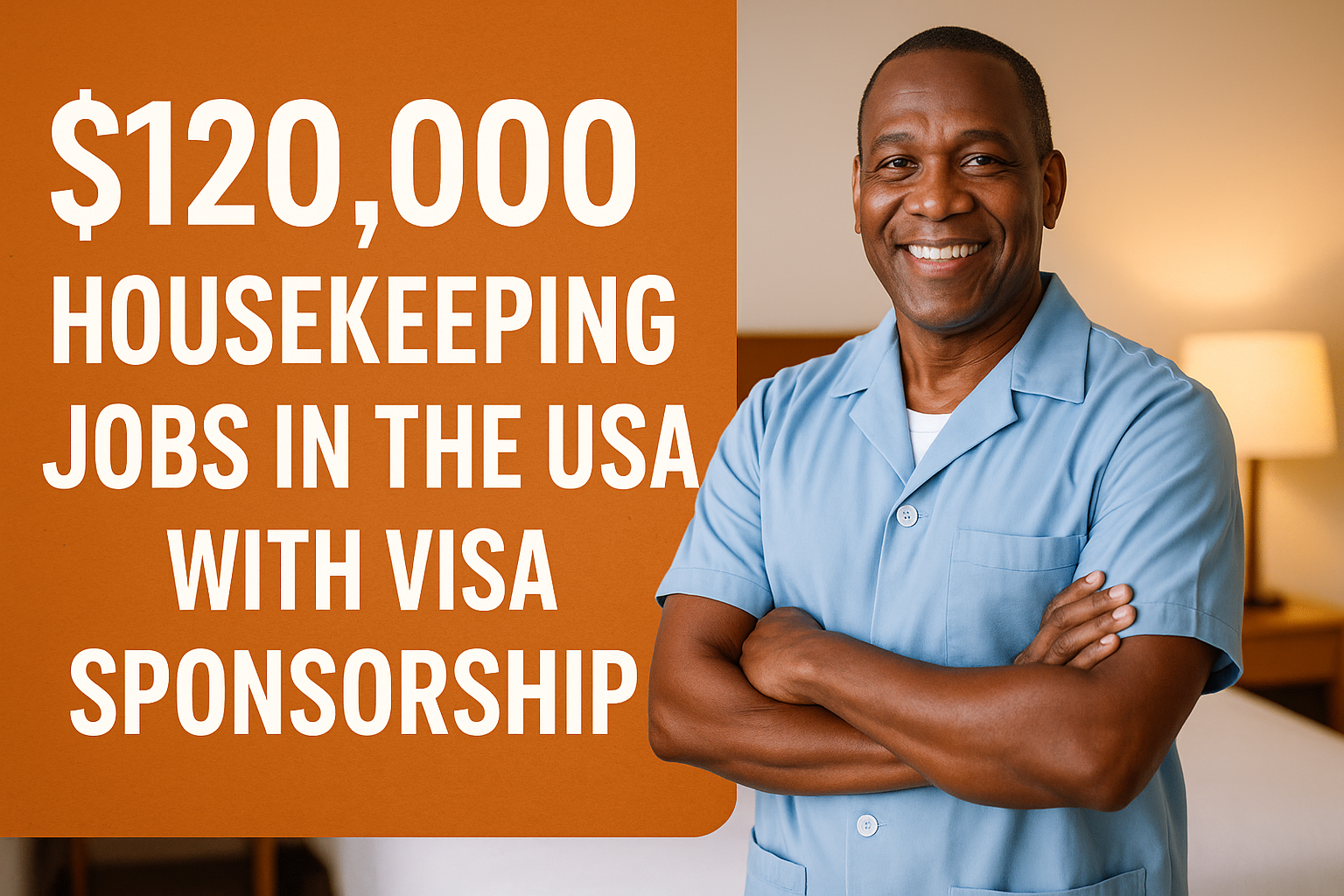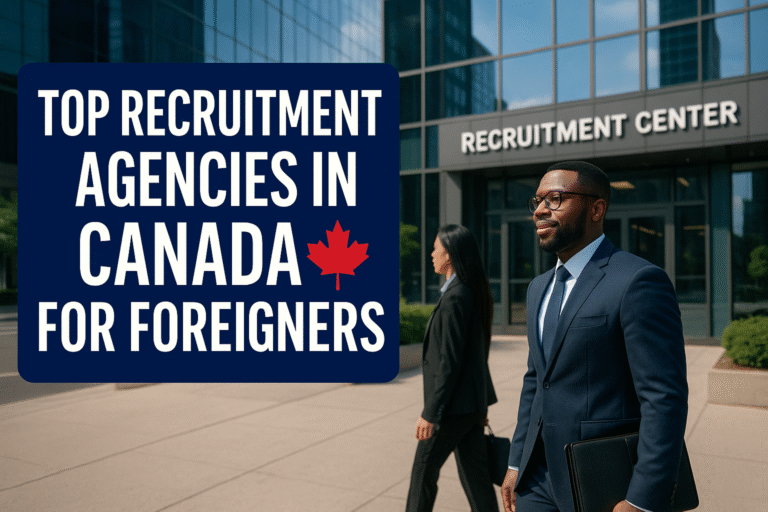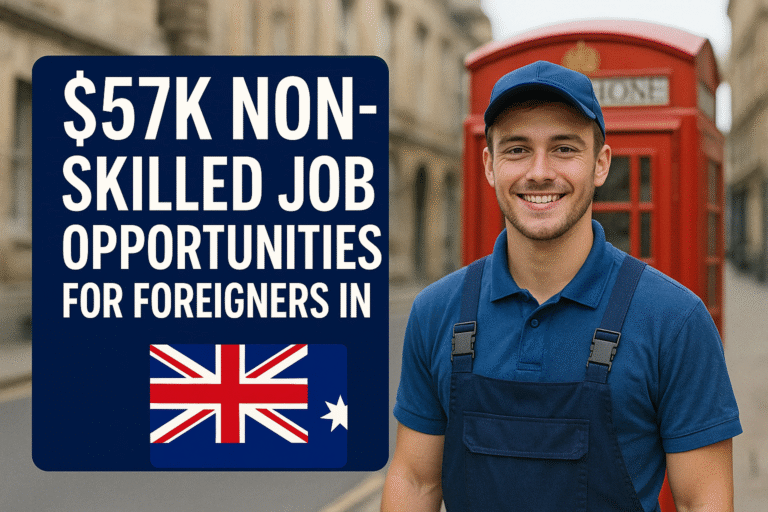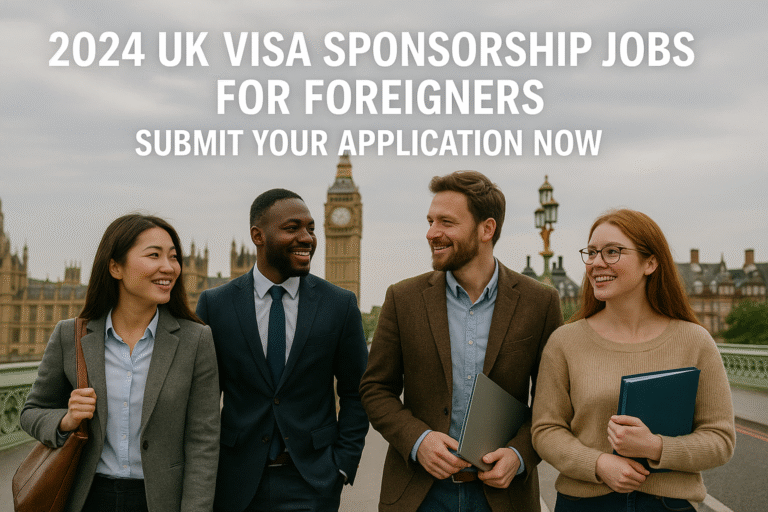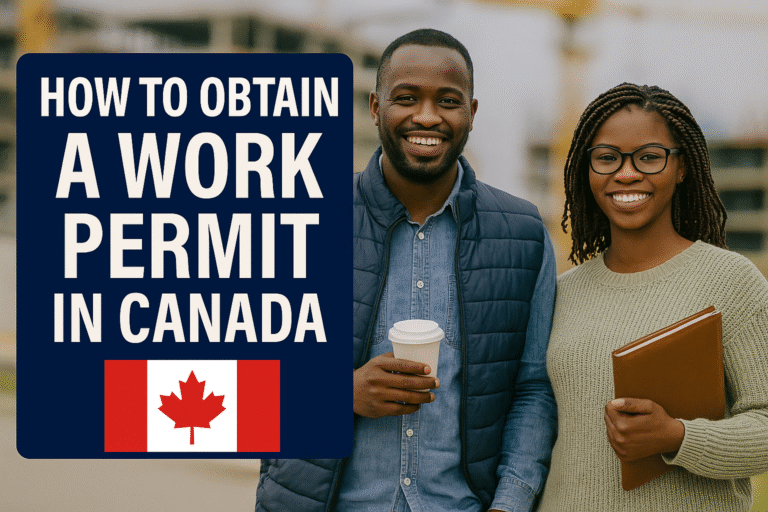The demand for housekeeping services in the United States is on the rise, driven by the hospitality industry’s growth and an increasing need for domestic help. For foreign workers seeking employment opportunities in the U.S., housekeeping jobs offer a viable entry point, especially with the availability of visa sponsorship. This blog post will guide you through the opportunities, the application process, and how to secure a housekeeping job in the USA with visa sponsorship.
Housekeeping Jobs in the USA with Visa Sponsorship
Housekeeping jobs in the U.S. vary based on the type of establishment. Here are some common positions:
1. Hotel Housekeeper
- Role: Cleaning and maintaining guest rooms, restocking supplies, and ensuring the overall cleanliness of the hotel.
- Locations: Hotels, motels, resorts, and lodges.
2. Hospital Housekeeper
- Role: Cleaning patient rooms, sanitizing surfaces, and maintaining a sterile environment to prevent the spread of infection.
- Locations: Hospitals, clinics, and nursing homes.
3. Residential Housekeeper
- Role: Cleaning private homes, performing tasks like dusting, vacuuming, laundry, and occasionally cooking or running errands.
- Locations: Private residences, estates, and residential complexes.
4. Industrial/Commercial Cleaner
- Role: Cleaning large facilities such as office buildings, factories, and warehouses, which may include specialized cleaning tasks.
- Locations: Office buildings, factories, warehouses, and shopping centers.
Why Consider Housekeeping Jobs in the USA?
Housekeeping jobs in the U.S. are not only plentiful but also come with several advantages for foreign workers:
- Stable Employment: The demand for housekeeping services remains consistent across hotels, resorts, hospitals, and private homes.
- Entry-Level Opportunities: Housekeeping positions often require minimal qualifications, making them accessible to a wide range of applicants.
- Visa Sponsorship: Many employers in the hospitality industry are willing to sponsor visas for qualified candidates, providing a pathway to work legally in the U.S.
- Opportunities for Growth: With experience, housekeeping staff can advance to supervisory roles or specialize in areas like laundry management or guest services.
Visa Sponsorship for Housekeeping Jobs
Securing a housekeeping job in the U.S. with visa sponsorship involves a few key steps:
1. H-2B Visa for Non-Agricultural Workers
The H-2B visa is designed for temporary non-agricultural workers, which includes many housekeeping roles. Employers in the U.S. can sponsor foreign workers under this visa for up to one year, with the possibility of extension. Here’s what you need to know:
- Eligibility: The job must be temporary or seasonal, and the employer must demonstrate that there are not enough U.S. workers available to fill the position.
- Application Process: Your employer will need to file a temporary labor certification with the U.S. Department of Labor, followed by a petition with the U.S. Citizenship and Immigration Services (USCIS).
- Benefits: The H-2B visa allows you to work in the U.S. legally and can be extended for up to three years.
2. J-1 Visa for Hospitality Internships
The J-1 visa offers opportunities for hospitality internships and training programs in the U.S., which can include housekeeping positions:
- Eligibility: This visa is available to students, recent graduates, or young professionals who wish to gain experience in the U.S. hospitality industry.
- Application Process: You’ll need to apply through a designated J-1 sponsor organization that will place you with a U.S. employer.
- Benefits: The J-1 visa provides cultural exchange opportunities and allows you to gain practical experience in the U.S.
How to Apply for Housekeeping Jobs with Visa Sponsorship
1. Research Employers
Start by researching U.S. employers that are known to sponsor visas for housekeeping roles. Focus on large hotel chains, resorts, hospitals, and staffing agencies that have a history of hiring foreign workers.
2. Prepare Your Application
- Resume: Create a professional resume that highlights your relevant experience, including previous housekeeping roles, skills, and any certifications.
- Cover Letter: Write a tailored cover letter explaining your interest in the position and your eligibility for visa sponsorship.
- References: Have references ready from previous employers who can vouch for your work ethic and reliability.
3. Submit Applications
- Job Boards: Use job boards like Indeed, Glassdoor, and LinkedIn to find housekeeping jobs in the U.S. that mention visa sponsorship.
- Direct Applications: Apply directly to employers through their websites or via email, making sure to mention your need for visa sponsorship.
- Recruitment Agencies: Consider registering with recruitment agencies that specialize in placing foreign workers in housekeeping roles in the U.S.
4. Interview Preparation
If your application is successful, you’ll be invited for an interview, which may be conducted via phone or video call. Prepare by researching the company, practicing common interview questions, and being ready to discuss your visa needs.
5. Visa Sponsorship Process
Once you receive a job offer, your employer will begin the process of sponsoring your visa. They will handle the necessary paperwork, including filing petitions and obtaining labor certifications if required. Be sure to stay in close communication with your employer throughout this process.
Tips for Success
- Gain Relevant Experience: Prior experience in housekeeping, particularly in settings similar to your target job, can increase your chances of being hired.
- Demonstrate Reliability: Housekeeping roles require trustworthiness and attention to detail. Highlight these qualities in your resume and during interviews.
- Be Flexible: Being open to different locations or shifts can make you a more attractive candidate to employers.
How do I find a company willing to sponsor my visa in USA?
Finding a company in the USA willing to sponsor your visa can be challenging but achievable with the right strategy. Here are some steps you can follow to increase your chances:
1. Target Companies Known for Sponsoring Visas
- Research Companies: Focus on industries that are more likely to sponsor visas, such as technology, healthcare, engineering, and finance. Companies in these sectors often have a high demand for specialized talent.
- Use Visa Sponsorship Databases: Websites like MyVisaJobs.com and H1BGrader.com allow you to search for companies that have a history of sponsoring H-1B visas and other types of work visas. You can filter by industry, job title, and location.
- Check Company Career Pages: Many companies list their willingness to sponsor visas on their career pages. Look for this information in the job postings or on the company’s careers site.
2. Use Job Boards Focused on Visa Sponsorship
- Specialized Job Boards: Use job boards that cater specifically to international candidates seeking visa sponsorship, such as Indeed, Glassdoor, and LinkedIn with filters set to include jobs that offer visa sponsorship.
- Global Companies: Apply to multinational companies with offices in the USA. They are more likely to have the resources and experience to sponsor visas.
3. Consider Internships or Contract Work
- Internships: If you are early in your career, consider internships or trainee programs that could lead to full-time employment with visa sponsorship.
- Contract-to-Hire Positions: Some companies may be more willing to sponsor a visa after you have proven yourself as a contractor. Contract work can also be a way to get your foot in the door.
4. Consider Less Competitive Locations
- Regional Focus: Some regions in the USA may have less competition for jobs and may be more open to sponsoring visas, especially if they have a shortage of skilled workers in certain industries.
- Rural Healthcare Programs: If you are in the healthcare field, consider applying to programs in rural or underserved areas, which may have more incentive to sponsor visas for qualified professionals.
By targeting the right companies, using specialized resources, and networking effectively, you can increase your chances of finding an employer in the USA willing to sponsor your visa.
What documents are needed for USA visa sponsorship?
When applying for a U.S. visa with sponsorship from an employer, you will need to prepare a range of documents. The specific documents required can vary depending on the type of visa you are applying for. Below is a list of common documents needed for employer-sponsored visas such as the H-1B, L-1, and other employment-based visas:
1. Documents from the Employer
- Job Offer Letter: A formal job offer letter from the sponsoring employer that outlines the job title, responsibilities, salary, and other terms of employment.
- Labor Condition Application (LCA): For H-1B visas, the employer must file an LCA with the U.S. Department of Labor, which certifies that the employer will pay the prevailing wage for the position and that hiring a foreign worker will not negatively impact the wages and working conditions of U.S. workers.
- Petition for a Nonimmigrant Worker (Form I-129): The employer must file Form I-129 with U.S. Citizenship and Immigration Services (USCIS) to petition for the visa. This form includes details about the job, the employer, and the beneficiary (you).
- Company Documentation: The employer may need to provide evidence of their business operations, such as tax returns, business licenses, and company financial statements, to demonstrate their ability to pay the offered salary.
2. Documents from the Employee (Beneficiary)
- Passport: A valid passport that is not set to expire for at least six months beyond your intended stay in the U.S.
- Educational Credentials: Copies of your degrees, diplomas, transcripts, and professional certifications that are relevant to the job. These documents may need to be evaluated by an authorized credential evaluation service to confirm their equivalence to U.S. qualifications.
- Resume/CV: A current resume or curriculum vitae that details your professional experience, education, and skills.
- Work Experience Letters: Letters from previous employers verifying your work experience in the relevant field. These letters should include details like your job title, duration of employment, and job responsibilities.
- Professional Licenses: If your job requires a professional license (e.g., in healthcare, engineering, or law), you must provide a copy of the license.
- Language Proficiency Test Results: If applicable, proof of language proficiency in English, such as TOEFL or IELTS scores.
- Nonimmigrant Visa Application (Form DS-160): You will need to complete and submit the DS-160 form online as part of the visa application process. After submission, print the confirmation page to bring to your visa interview.
- Visa Application Fee Receipt: Proof of payment of the visa application fee, which you will need to bring to your visa interview.
3. Additional Documents for Certain Visa Types
- H-1B Visa:
- Specialty Occupation Evidence: Documentation showing that the job qualifies as a specialty occupation, typically requiring a bachelor’s degree or higher.
- L-1 Visa (Intra-Company Transfer):
- Proof of Employment with the Foreign Affiliate: Documents proving you have been employed with the company’s foreign affiliate for at least one year within the past three years.
- Evidence of the Relationship Between Companies: Documentation that demonstrates the relationship between the U.S. company and its foreign affiliate, parent, or subsidiary.
- O-1 Visa (Individuals with Extraordinary Ability):
- Evidence of Extraordinary Ability: Documentation such as awards, published work, or letters of recommendation that demonstrate your extraordinary ability in your field.
- PERM Labor Certification (for Green Card Applicants):
- Proof of Recruitment Efforts: Documentation showing that the employer has attempted to recruit U.S. workers for the position, such as job advertisements and interview records.
4. Documents for the Visa Interview
- Appointment Confirmation: The confirmation page for your visa interview appointment.
- Passport-Sized Photos: Two recent passport-sized photos that meet U.S. visa photo requirements.
- Visa Interview Notice: Any notice or instructions received from the U.S. embassy or consulate regarding your visa interview.
- Proof of Ties to Your Home Country: Documents that demonstrate your intention to return to your home country after your employment in the U.S., such as property deeds, family ties, or a letter from your current employer.
5. Family Members (If Applicable)
- Marriage Certificate: If your spouse is applying for a dependent visa (e.g., H-4 or L-2), provide a marriage certificate.
- Birth Certificates: Provide birth certificates for any children applying as dependents.
- Passports and Photos for Dependents: Each dependent will need a valid passport and passport-sized photos.
6. Miscellaneous Documents
- Medical Examination: For some visa types, particularly if you’re applying for a green card, you may need to undergo a medical examination by an approved physician.
- Police Clearance Certificate: Some applicants may be required to provide a police clearance certificate from their home country or any country where they have lived for more than six months.
7. Translations
- Certified Translations: If any of your documents are not in English, you will need to provide certified translations.
The exact requirements can vary based on the specific visa category, the country from which you are applying, and any unique circumstances related to your application. It is advisable to consult with your employer’s HR department, an immigration lawyer, or the U.S. embassy or consulate where you plan to apply to ensure you have all the necessary documents.
Conclusion:
Housekeeping jobs in the U.S. offer a viable pathway for foreign workers seeking employment with visa sponsorship. By understanding the types of visas available, preparing a strong application, and targeting employers known for hiring foreign workers, you can increase your chances of securing a job in this growing industry. Start your application today and take the first step toward a new career in the United States.
